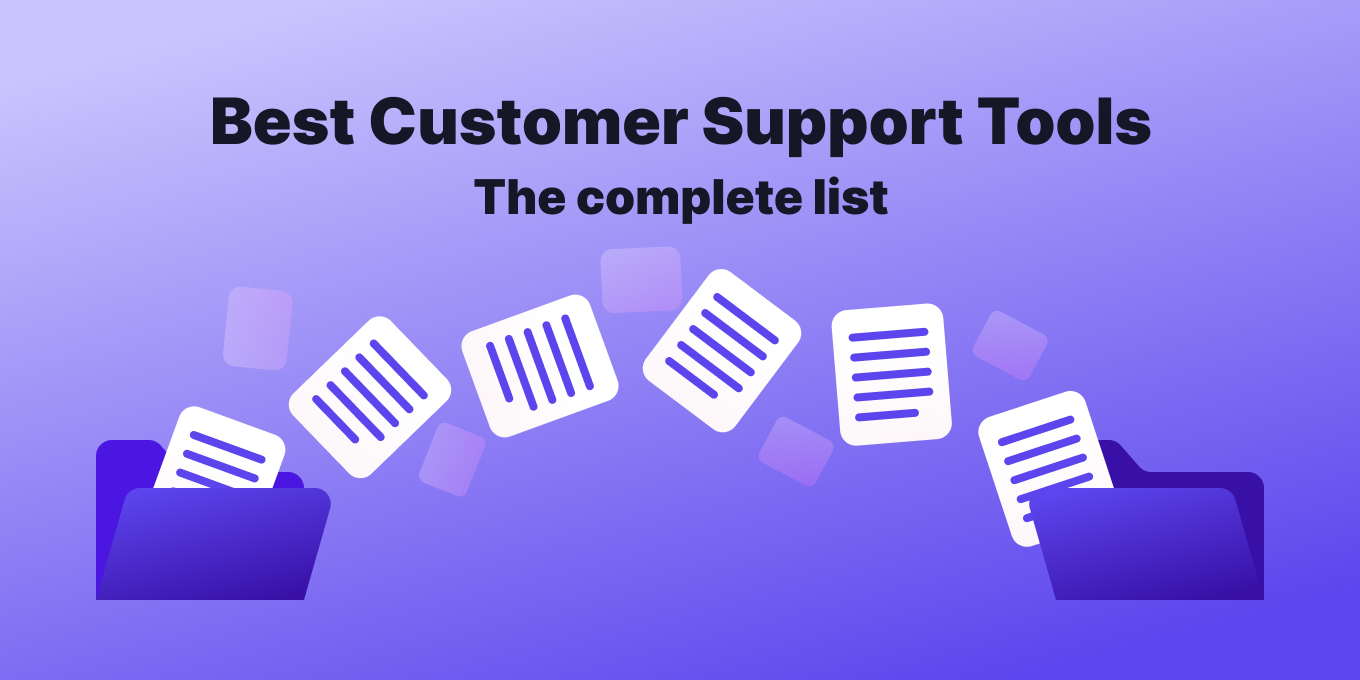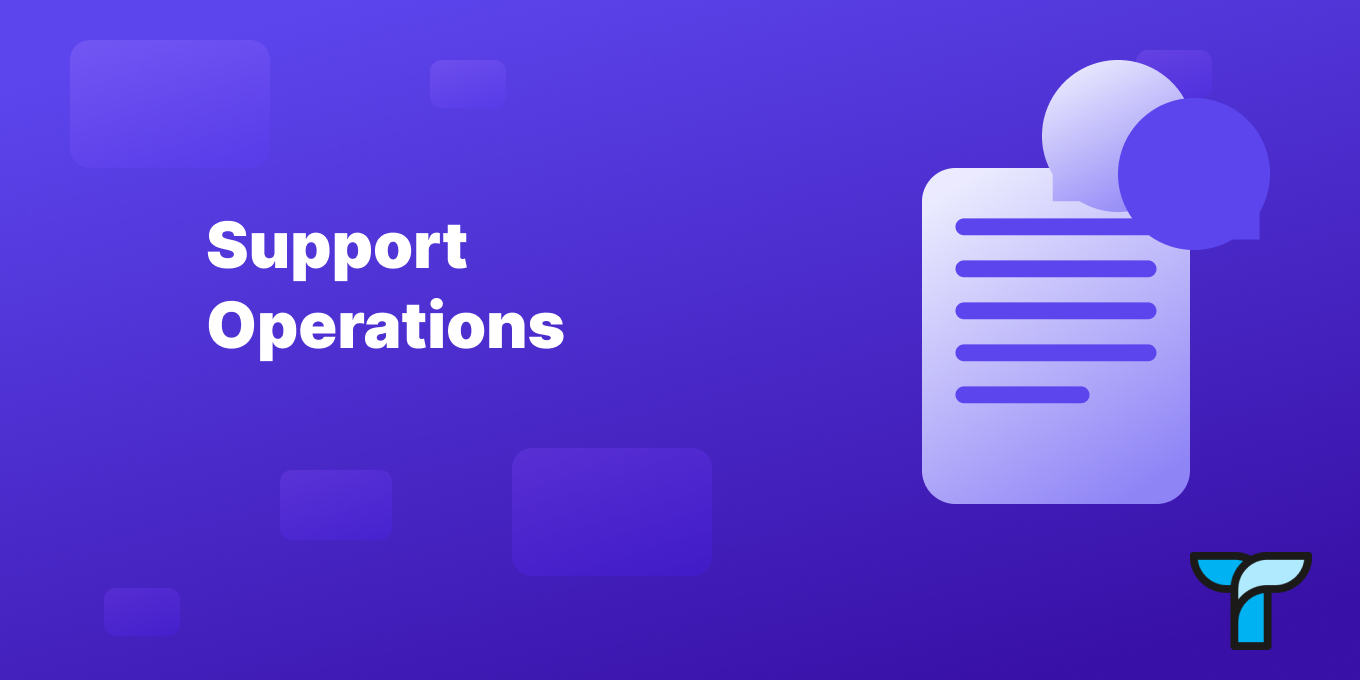Congrats! You’re heading up the efforts to create documentation for your support team. It’s a great privilege.
“But I have no idea what I’m doing,” you might respond.
Well, then you’ve come to the right place!
Through this article, you’ll gain insight into how to start the documentation process, learn ten expert tips for writing successful support documentation, and see how a tool like Tettra can help you create the internal knowledge base of your dreams.
Benefits of great support team documentation
High-quality support documentation is far more than a collection of procedures and product details. Your documentation is a strategic asset that streamlines internal processes, reduces training time, and improves customer interactions.
Many customer experience teams start out by having support agents help create documentation. That’s great, but as your team grows you may launch a separate documentation team. Having team members dedicated to knowledge management allows you to embed them across your organization, fostering more collaboration between your CX team and functions like marketing, product, and engineering.
This results in better documentation, but it can also improve your organization’s ability to implement customer feedback and design better product features. Your technical writers become liaisons between customer support and the rest of your company, bringing more attention to the issues that your customers and your support team care about most.
All in all, when designed well and kept updated, your support documentation becomes a reliable source of truth for your customer support team, ensuring that the whole team can deliver consistently great customer service.
More about customer service from Tettra:
Define your documentation goals
There are two parts to figuring out the goals for your documentation.
First, you need to identify what needs you have: namely, what information needs to be documented.
(Much to the dismay of many founders, the answer actually isn’t everything.)
Then you’ll need to set some actual objectives, starting with developing a broad content plan and then homing in on each article.
Let’s go through it briefly.
How to identify customer needs
“If I had asked people what they wanted, they would have said faster horses.”
This famous quote, usually attributed to Henry Ford, sums up the main point of this step.
As a support leader, you already know you can’t take everything a customer says at face value. You need to go a level deeper. A faster horse serves the purpose of getting someone from point A to point B more quickly — that was the problem customers needed solved, and Ford solved it by inventing the automobile.
In the same way, you need to approach support team documentation by figuring out what’s really needed. Your customers and support team may have an idea of the documentation they want, but those things may or may not be the right items to document.
This goes for both types of documentation:
- Internal documentation — documents intended for your team’s eyes only, such as process maps and internal workflows.
- External documentation — documents intended for customers’ usage, but also highly useful for your internal teams. This includes things like how-to guides and release notes.
When you’re creating team and customer documentation, gather feedback from them, but try to approach their feedback with the mindset of “What do they actually need to know?”
Let’s use an example of something that’s often left out of documentation: what payment methods your company accepts.
Say someone asks “Do we accept American Express?”
They certainly need a direct answer to that question, but more importantly, they’re illustrating a need for a document that reviews all payment methods that are accepted. This document could also include talk tracks that explain why you don’t accept certain payment methods and suggested alternatives for customers.
Your support inbox — Zendesk, Help Scout, Gorgias, or so on — is a great place to start. By looking at your most common ticket topics, you’ll immediately get a feel for the things your support team spends the most time on. Analyzing those conversations will uncover a heap of documentation opportunities.
Another way to identify these needs is by using a tool like Tettra.
When you use Tettra as your knowledge base, your team can ask their questions to Kai, Tettra’s Knowledge AI. Kai will search its database for potential answers. If Kai can’t find anything, it’ll collect that information and pass it on to you or the relevant subject matter expert so an answer can be created for future use.
If you don’t have anything documented yet, you can also launch and build out a new knowledge base quickly with Tettra. For instance, you could have your team members log each time a customer asks a question. Then Kai can tell you just how often each question has been asked, enabling you to prioritize your documentation efforts.
Setting objectives and planning your documentation
Setting clear objectives for your support documentation is crucial to ensure it’s actually effective. It’s about creating content that informs the reader while providing practical solutions.
For each document, start with real issues or customer needs. Gather the relevant information, then determine the best way to present it. To optimize the structure and content of your product documentation, consider the following steps:
- Develop a content plan. Establish a well-organized plan for your customer knowledge base and internal source of truth. This should include how you’ll categorize or tag articles, a regular update schedule, and a strategy for expanding content as new issues arise or new products are released.
- Define your goals: Clearly identify what each type of documentation aims to achieve. This could range from explaining a feature (like a user manual) to solving a common customer issue (like a how-to guide).
- Gather and organize information: Some topics may require input from other stakeholders. For instance, you’ll always need your engineering team to help you develop release notes. Working closely with the responsible individuals will help to ensure accuracy and completeness.
Structuring and creating your documentation
Once you figure out your documentation needs, it’s time to start writing. Right?
Almost!
You’ll want to choose the correct documentation type and outline your document before you start writing.
Choose the best documentation type
Selecting the appropriate type of documentation is crucial when you’re creating support documentation. You wouldn’t write your release notes in an FAQ format, and you probably don’t want your process overview documents to be filled with overwhelming amounts of technical information.
There are six major types of support team documentation. Picking the right format makes a massive difference in how effective an article will be:
- User manuals. Comprehensive guides providing an overview of products or services.
- How-to guides. Detailed step-by-step instructions for specific tasks or processes.
- Release notes. Information about updates, new features, and bug fixes.
- Technical documentation. In-depth technical details, often for more advanced users or developers.
- Process documentation. Outlines internal procedures, protocols, and best practices.
- Source of truth. A centralized repository for all critical and comprehensive information.
Each type affects the writing and structure of content. For instance, user manuals provide a broad understanding of a product and its available features, while how-to guides require a more detailed, instructional, step-by-step approach.
Outline your document
If you’re a writer, this is the point where you groan. Outlines are the worst, aren’t they?
But that effort is worth it.
Outlining is often the most time-consuming part of the writing process. It requires distilling complex information into a clear, concise, and logical structure.
It forces you to structure your thoughts into a coherent framework.
As unenjoyable as it may be, creating an outline is arguably the most crucial step in writing. Fortunately, over time you can develop templates for each type of documentation, meaning once you’ve chosen the format for a post, you’ll be well on your way to having an outline.
Pro-tip: Create a template for each type of documentation you’re using to make outlining and writing new documentation faster. Tettra makes this process easy, allowing you to create templates from existing pages.
For example, you’ve identified that you need to write a step-by-step tutorial on how to troubleshoot a product issue. As soon as you make that decision, you know your tutorial will include certain pieces:
- Issue summary
- Background context
- Step 1
- Step 2
- Step 3 (and so on..)
- Escalation process
I won’t dive into detail on how to write an outline as I’m sure it’s something you learned sometime around the age of twelve, but the Berkeley Student Learning Center provides a great refresher if you need one.
The most important part of your outline is getting feedback from others. Before delving into the full document, it’s a good idea to present the outline to colleagues — particularly subject matter experts — to get their input. Tenure customer service agents will also have valuable insights.
This review process doesn’t need to take long. Just asking for a simple gut check will enable others to fill in any gaps in knowledge and provide an opinion on whether the document is fulfilling its intended purpose.
Your outline gives you broad brush strokes — once you have those, writing just requires filling in the blanks.
Writing great support documentation
The key to writing great support documentation is to prioritize clarity and understanding over everything else. This isn’t a novel, so don’t try to wax poetic or write like Hemingway.
Here are a few tips for creating documentation that’s consistently engaging and helpful:
- Use a style guide. A style guide enables consistency across your entire knowledge base. It’s a centralized document covering various elements like voice, tone, fonts, and colors. You can leverage your marketing team’s existing style guide to align your support team’s tone with your brand’s voice.
- Simplicity of language. Aim for simplicity in your language and write at an accessible reading level to ensure your content is understandable to a broad audience. Use clear, straightforward terms and avoid complex jargon. The tone should be educational and matter-of-fact, focusing on what can be done rather than what cannot. Hemingway App is a great (and free) tool to help you identify opportunities to simplify your writing.
- Define terms. When writing about products or services, be sure to use the words used throughout your product (and define them for clarity). If your product has “Users” and “Admins” your document should use headers and instructions such as “Add new user” or “Add new admin” rather than “Add new team member.”
- Use of white space. White space is almost as important to document writing as the words themselves. The strategic use of white space enhances readability and reduces visual clutter. Generous spacing between paragraphs, around images, and in margins allows the reader to easily navigate the content and absorb information without feeling overwhelmed.
Tettra makes this easy for you. We support certain style changes — such as using an H2 or H3, bolding or italicizing text, or adding a link — but we don’t allow your authors to change spacing, fonts, colors, or sizes. This helps keep things easily readable, no matter who writes. - Consistent and logical structure. Organize your content consistently and logically. Each section should flow naturally into the next, with clear headings and subheadings that guide the reader through the document. A well-structured document allows users to find information quickly and with minimal effort. Try to keep a consistent structure between similar document types. If you have twenty articles about different integrations, each one should follow the same format.
- Use of visual aids. Incorporate images, diagrams, and videos to supplement your text. Visuals help break up long sections of text while simultaneously illustrating ideas and enhancing understanding.
- Table of contents. A table of contents at the beginning or side of your document improves navigation, allowing readers to quickly locate specific sections or topics. This is especially helpful in longer documents, where users might seek particular information without reading the entire content.
Tettra’s got you covered here. A table of contents is automatically added to a page by simply filling out the title and adding headers. The headers you use are automatically added to the table of contents that lives on the left side of each Tettra page. - Use callouts, hyperlinks, tables, and other formatting tools. Using callouts for important notes or tips, hyperlinks for additional resources, and tables for data creates a better reader experience.
- Edit, edit, edit. Edit your work, then have someone else edit it again. I’m not just talking about proofreading. Get feedback on your outline, then after you write, get more feedback. Of course, you understand what you wrote — you’re the one who wrote it. But someone else might not. While you don’t have to make something perfect before publishing it, getting at least one other set of eyes on it helps ensure you didn’t miss anything major.
Create great documentation in no time
Creating effective support documentation goes beyond compiling information. It requires a thoughtful and intentional approach, but the payoff is that you’re able to meet the needs of your customers and team in a far more scalable way.
While we covered a lot of ground above, creating great documentation doesn’t have to take ages. Tools like Tettra allow you to launch a knowledge base and create documentation in no time.
Schedule your demo or start your free trial of Tettra today.
Anne-Marie works as a Fractional Head of Customer Success focused on providing an optimal customer experience in every interaction. She specializes in driving process & product improvements, creating thorough and easy-to-understand product documentation, and teaching others how to communicate more effectively through the written word. You can find her on LinkedIn.




